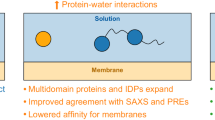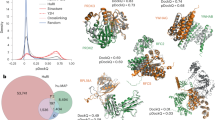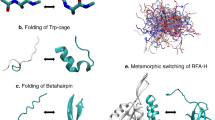Abstract
The accurate description of protein-protein interfaces remains a challenging task. Traditional criteria, based on atomic contacts or changes in solvent accessibility, tend to over or underpredict the interface itself and cannot discriminate active from less relevant parts. A recent simulation study by Mihalek and co-authors (2007, JMB 369, 584-95) concluded that active residues tend to be `dry', that is, insulated from water fluctuations. We show that patterns of `dry' residues can, to a large extent, be predicted by a fast, parameter-free and purely geometric analysis of protein interfaces. We introduce the shelling order of Voronoi facets as a straightforward quantitative measure of an atom's depth inside an interface. We analyze the correlation between Voronoi shelling order, dryness, and conservation on a set of 54 protein-protein complexes. Residues with high shelling order tend to be dry; evolutionary conservation also correlates with dryness and shelling order but, perhaps not surprisingly, is a much less accurate predictor of either property. Voronoi shelling order thus seems a meaningful and efficient descriptor of protein interfaces. Moreover, the strong correlation with dryness suggests that water dynamics within protein interfaces may, in first approximation, be described by simple diffusion models.
Similar content being viewed by others
Article PDF
Author information
Authors and Affiliations
Corresponding author
Rights and permissions
About this article
Cite this article
Bouvier, B., Grünberg, R., Nilges, M. et al. Shelling the Voronoi interface of protein-protein complexes predicts residue activity and conservation. Nat Prec (2008). https://doi.org/10.1038/npre.2008.1522.1
Received:
Accepted:
Published:
DOI: https://doi.org/10.1038/npre.2008.1522.1



